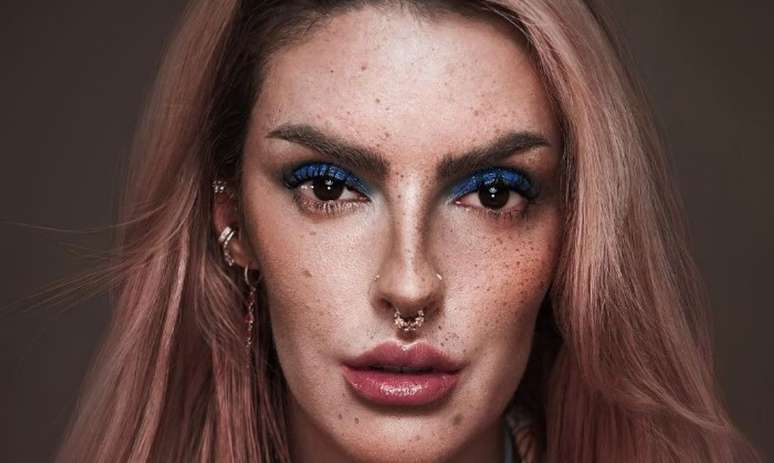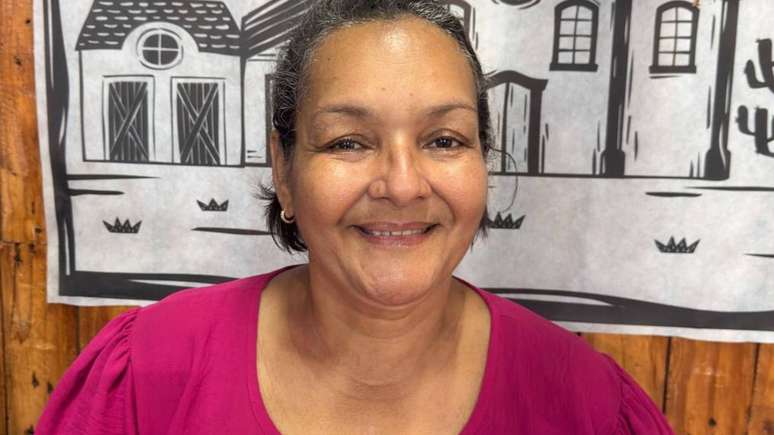The makeup artist revealed in a video what the process of discovering the condition was like. Doctors explain what an intersex person is
Influencer Karen Bachini has revealed through a video posted on YouTube that she is intersex. At age 32, she said she underwent numerous medical tests and evaluations to find out what was happening to her body. According to the report, the makeup artist considered herself to be a female pseudo-hermaphrodite, when one has female genitals and internal organs, but no hormones are produced.
html[data-range=”xlarge”] figure image img.img-84c861ac4175d0d604a2be02e6c6642fxdpyua9x { width: 774px; height: 463px; }HTML[data-range=”large”] figure image img.img-84c861ac4175d0d604a2be02e6c6642fxdpyua9x { width: 548px; height: 328px; }HTML[data-range=”small”] image figure img.img-84c861ac4175d0d604a2be02e6c6642fxdpyua9x, html[data-range=”medium”] figure image img.img-84c861ac4175d0d604a2be02e6c6642fxdpyua9x { width: 564px; height: 337px; }
Karen says she sought help from specialists when she was 18. At the time, she had no mammary glands and her ovary was very small. Doctors said she was early menopause.
“I was told at the time that I was menstruating at some point in my life and I went through menopause. But I always thought it was very strange because if I was menstruating I would know about it,” she said.
Then, the make-up artist underwent a feminine harmonization, a treatment done with a contraceptive pill. At this point, she still didn’t know she was intersex. She Karen did not produce any hormones and went through puberty after the matching process. But, when she stopped taking the pills, she noticed that her body began to shrink again.
“When I came back on the female hormones, I came back with the female characteristics. But having the female characteristics is just up to me taking the female hormones. If I stop taking them, I lose those characteristics,” she said elsewhere in the relationship.
What is intersex?
Intersex is an umbrella term used to classify various reproductive and sexual anatomical differences that don’t fit the usual definitions of male or female, explains Dr. Flávia do Vale, gynecologist and coordinator of the obstetrics service at Icaraí hospital.
In summary, intersex individuals may have chromosomes, genitalia, or internal reproductive organs that do not fit into the typical male or female category. Or they may have characteristics of both genders, male and female.
“Intersex, by definition, is when someone generally appears to be of one sex but has the dominant anatomy of the other sex, or when someone is born between the typical male and female genders. An example of this would be a person from the female appearance with predominantly male anatomy.” , points out the doctor.
Another example of a person born intersex, according to Flávia, is someone born with an intermediate presentation of male and female genitalia. This is the case, for example, with someone who is born with a larger-than-normal clitoris and no vaginal opening, or someone who is born with a scrotum that is labially split. “A person can also be born with mosaic genetics or cells with XX and XY chromosomes,” she adds. The older term for this condition is hermaphroditism.
According to the doctor. Priscila Pyrrho, the term intersex is also changing, as it implies that we are dealing with a person who has both genders, or would be of an intermediate gender. “Today, another denomination is being proposed called Sexual Differentiation Anomaly (ADS). This intersex term will soon become ADS. Gene ends up not showing up in the body,” she explains.
Evolutionary Sex Difference (DSD)
Psychiatrist and psychotherapist Dr. Saulo Ciasca points out that there are more than 40 types of DSD (sex developmental difference) — intersex is one of them. “There are conditions where the patient will have both male and female genitalia at the same time, to the point where they cannot be identified. We call them genital atypia, it is an atypical genital ”, he explains.
Saul points out that terms such as “anomaly”, “defect” and “genetic error” are not used. “We understand intersex as one more condition of human diversity, and not as anomalies or defects”, he justifies himself.
Manifestations in the body
Priscila clarifies that there are different types of intersex, depending on the degree of modification of the external genitalia and the bodily expression that the person will have. According to her, the person with ADS, in general, is the one who has a genetic sex, i.e. has a karyotype that would be XX, when she is a woman, and XY, when she is a man. However, the genotypic sex (which appears in the body) does not match that of the chromosome.
“So the patient has an XX or XY chromosome, but the bodily expression (gonads), or genitalia, isn’t compatible with the genetic one. Sometimes the phenotype (appearance) isn’t compatible either,” she says.
An example is the person who has the chromosomes of a woman, the ovaries of a woman, but the external genitalia look male, exemplifies Flávia. The intersex person can also have ambiguous genitalia, that is, when it is not possible to identify the genitalia. “For example: You don’t know if it’s a very large clitoris, or a very small penis; there may be a vagina, but no vaginal canal,” Priscilla says.
According to her, it is very common to have this confusion at birth. For this reason, “corrective” surgeries – which operate on the baby’s genitals – are also quite common.
corrections at birth
Saul points out that intersex is another condition of human diversity and, therefore, should not be corrected by itself. However, many people still opt for surgical “fixes”, which can take away the patient’s reproductive and sexual function.
The psychiatrist recalls that there is a movement in Brazil called ABRAE (Brazilian Intersex Association) of activists, fathers, mothers, family members and intersex people. They struggle not to operate early, because these children cannot yet talk about themselves, because they cannot yet exercise consent on their bodies.
“Performing such an operation in the name of abandoning genitals that are considered aesthetically standardized like a penis or a vagina generates many problems and many complications. And then we have to deal with these problems and complications for the rest of the person’s life. These groups and the medicine has worked with the perspective that intersex people exist, intersex people are not anomalies, disorders and diseases, they are people who can decide for their bodies when they have the ability to consent”, he concludes.
Source: Terra
Ben Stock is a lifestyle journalist and author at Gossipify. He writes about topics such as health, wellness, travel, food and home decor. He provides practical advice and inspiration to improve well-being, keeps readers up to date with latest lifestyle news and trends, known for his engaging writing style, in-depth analysis and unique perspectives.









